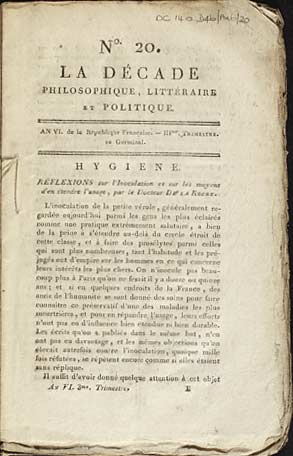Other Forms of Dating
From time to time users may encounter other, unfamiliar forms of dating. One example of this is the French Revolutionary Calendar, which operated in France between November 1793 and January 1806 (and again, briefly in 1871). This was a complete departure from the traditionally recognised form of calendar.
According to the French Revolutionary Calendar, a year was divided into 12 months, each of which had 30 days, with an additional 5 or 6 days following at the end of the year. The months had very unfamiliar names:
- Vendémiaire
- Brumaire
- Frimaire
- Nivôse
- Pluviôse
- Ventôse
- Germinal
- Floréal
- Prairial
- Messidor
- Thermidor
- Fructidor
Months were not divided into weeks, but into three 'decades', each of which consisted of 10 days, named:
- Primidi
- Duodi
- Tridi
- Quartidi
- Qunitidi
- Sextidi
- Septidi
- Octidi
- Nonidi
- Decadi
The five or six additional days at the end of the year, following on from Fructidor, were known as:
- jour de la vertu
- jour de génie
- jour du travial
- jour de l'opinion
- jour des recompenses
- jour de la révolution.
The latter was a 'leap day', occurring once every four years.
Years themselves were numbered from 1 to 14, with 1 being the first year of the Republic, following the Revolution, that is the 22nd of September 1792 to the 21st of September 1793. Converting a Republican year, therefore, is similar in practice to converting a regnal year.
This pamphlet entitled 'La Décade' is dated 20 Germinal in the 6th year of the Republic. This equates to the 9th of July 1798.

Pamphlet, 1798 (DC140.D6) with detail below

There are many other forms of specialised calendar, such as the Hebrew, Islamic and Chinese calendars. There are resources for deciphering these calendars available online.
Next page: Undated Documents